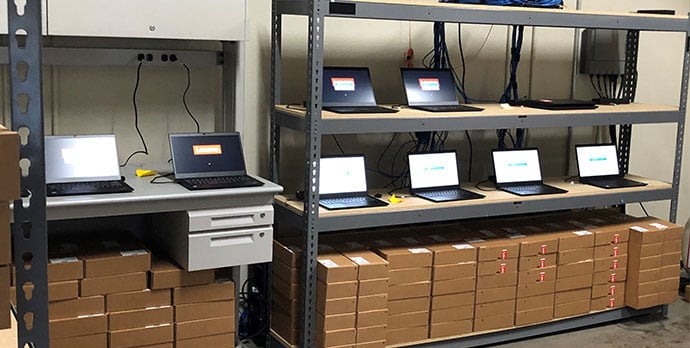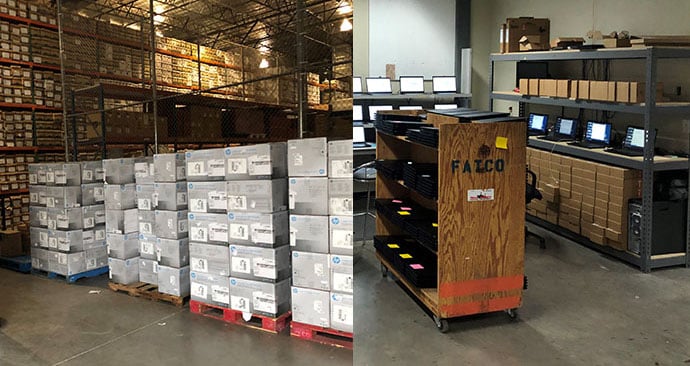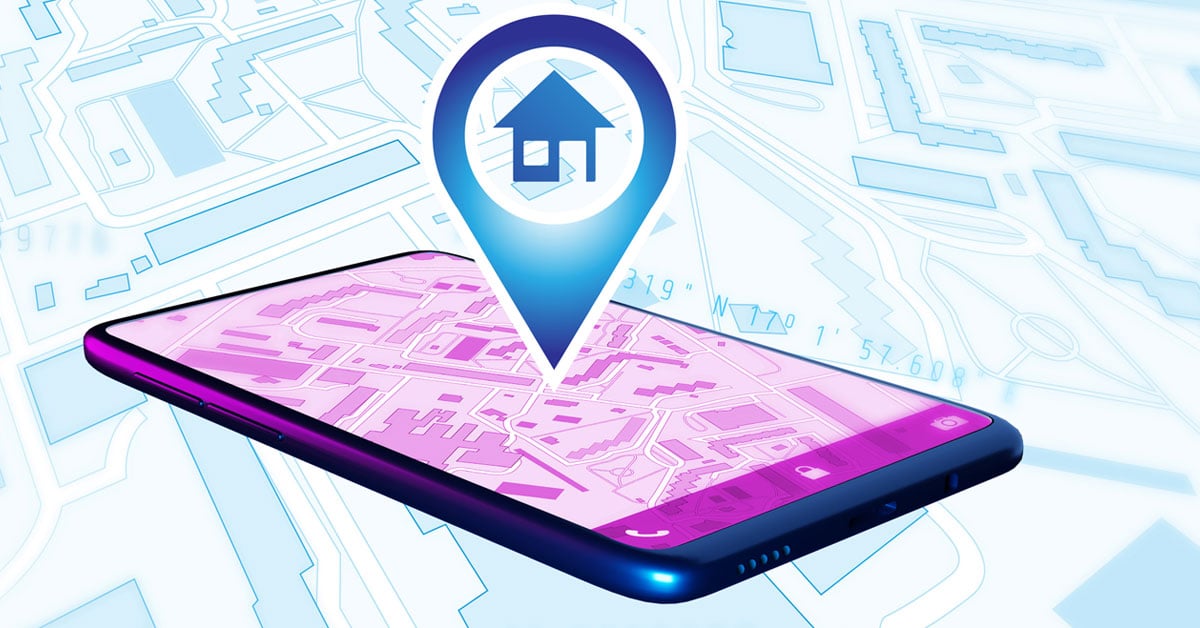The coronavirus pandemic has challenged businesses and organizations in the United States and around the world to adapt and innovate rapidly. Faced with the urgent need to protect employees, customers and the larger community, these creative solutions reveal a spirit of innovation and a willingness to overcome traditional limitations to provide safe and effective solutions to serve customers.
“This was a monumental effort that reflected the dedication to service, teamwork and innovation inherent in our people and our culture. With the majority of our people now working from home, we were able to support social distancing while continuing to serve our customers and close real estate transactions.”
This three-part Q&A series highlights First American’s efforts to adapt and innovate amid COVID-19 as part of the company’s commitment to its employees, customers and communities. Part one of the series delves into how the company rapidly moved to help employees work from home.
Peter McGarahan, senior director of information technology infrastructure, provides his perspective on the effort from the vantage point of the corporate information technology team at First American.
Question: When did you realize that you may need to shift the company to a work from home posture rapidly?
“Internally, operational leadership across the company had been monitoring the coronavirus situation for a while and had taken some precautionary steps, but it was the first week of March when we started to see offices in certain parts of Washington and California shift employees to work from home. Initially, our team supported these shifts one by one, identifying any technology needs and then securing the appropriate equipment, like laptops, monitors, accessories, printers, scanners and multi-functional devices, for each staff member. In 2019, we had conducted some robust business tests to measure our ability to shift large numbers of employees to work from home as part of our long-standing business continuity plan. We were able to lean on some of the lessons learned from those tests, which were extremely valuable in the moment. I’d encourage organizations of all sizes to thoroughly and regularly test their business continuity plans, as the tests and lessons learned prove immensely beneficial when faced with real-world challenges.
“However, as we all recall, the impact of the pandemic broadened quickly and by the second week of March the pace of offices shifting to work from home accelerated. We quickly restructured our approach to keep up with the demand for work-from-home equipment and support the efforts to protect our people, while enabling them to continue to help our customers close real estate transactions. We pulled together our corporate and divisional information technology leaders to proactively identify the regions and office locations that were most likely to need to shift to work from home rapidly.
“We identified and assigned key staff to oversee each technology support area and gathered the team in our Tempe, Ariz. office. By March 16, we had assembled the team, secured the additional resources needed, and streamlined our processes to meet the rapidly escalating demand to equip our people to work from home.”
Question: What were some of the next steps you took to facilitate this mobilization?
“Quickly defining and launching a streamlined process to assess our businesses’ technology needs across the country was one of the most important contributors to our ability to successfully support our employees’ shift to working from home. The team assembled in Tempe served as the hub for securing and delivering the technology to the offices where it was needed, so we quickly aligned the team structure and roles, logistics, processes and communications. We had daily calls with our divisional information technology leaders, so we could nimbly adapt to their needs.
“After we verified our existing inventory levels for the required work-from-home equipment, we worked closely with our procurement team to engage technology suppliers and manufacturers to fill the gaps in our inventory. Because we moved quickly, we were ahead of the demand that many other companies started to make for similar technology. Yet, while we were still competing with lots of other U.S. businesses to acquire additional laptops, monitors, headsets, webcams, printers, scanners, and other accessories, our procurement team was diligent, creative and moved fast to secure and get the equipment to Tempe. Our team then manually unboxed, assembled, and prepped each device with the appropriate company software, while also uploading employees’ existing devices with their preferred personal computer settings. Overall, an effort that would have taken several months under normal conditions was accomplished in a matter of weeks.”
Question: How would you describe the scale of the mobilization effort?
“This was a monumental effort that reflected the dedication to service, teamwork and innovation inherent in our people and our culture. With the majority of our people now working from home, we were able to support social distancing while continuing to serve our customers and close real estate transactions.”
Question: How did you prioritize the mobilization efforts?
“It was our group’s top priority. We kept management informed of any additional assistance we needed to ensure we were delivering in a timely manner. The management team met daily to review what was working well and what was not, and they provided additional resources as needed. We made continual optimization and improvement changes to enhance our processes and efficiency to better support our people as they helped customers close real estate transactions across the country.”
Question: What made this effort successful?
“Overall, the effort reflects the commitment of our people to our customers and each other, and to First American’s legacy of innovation. That said, some key factors were instrumental in our success, including the partnership and collaboration between many groups across different parts of the business. Our shared commitment to supporting our people and customers served as a bond between our groups, and together we made quite a team during a once-in-a-career moment.
“Centralizing our team enhanced our efficiency and fostered additional innovation. It also allowed key team members to leverage each other for ideas and rapidly implement them. And many of the new processes and solutions we developed during that time will enhance our effectiveness and benefit our customers as we move forward. Across the leadership team and throughout our organization, our company’s ‘people first’ spirit shined in a moment where it was needed most. So many people recognized this opportunity and went above and beyond the call of duty to help each other and serve our customers.”
Look for the second in our three-part Q&A series that looks at innovations in the field as First American employees worked to close transactions amid the pandemic, while protecting each other, customers and their communities.





